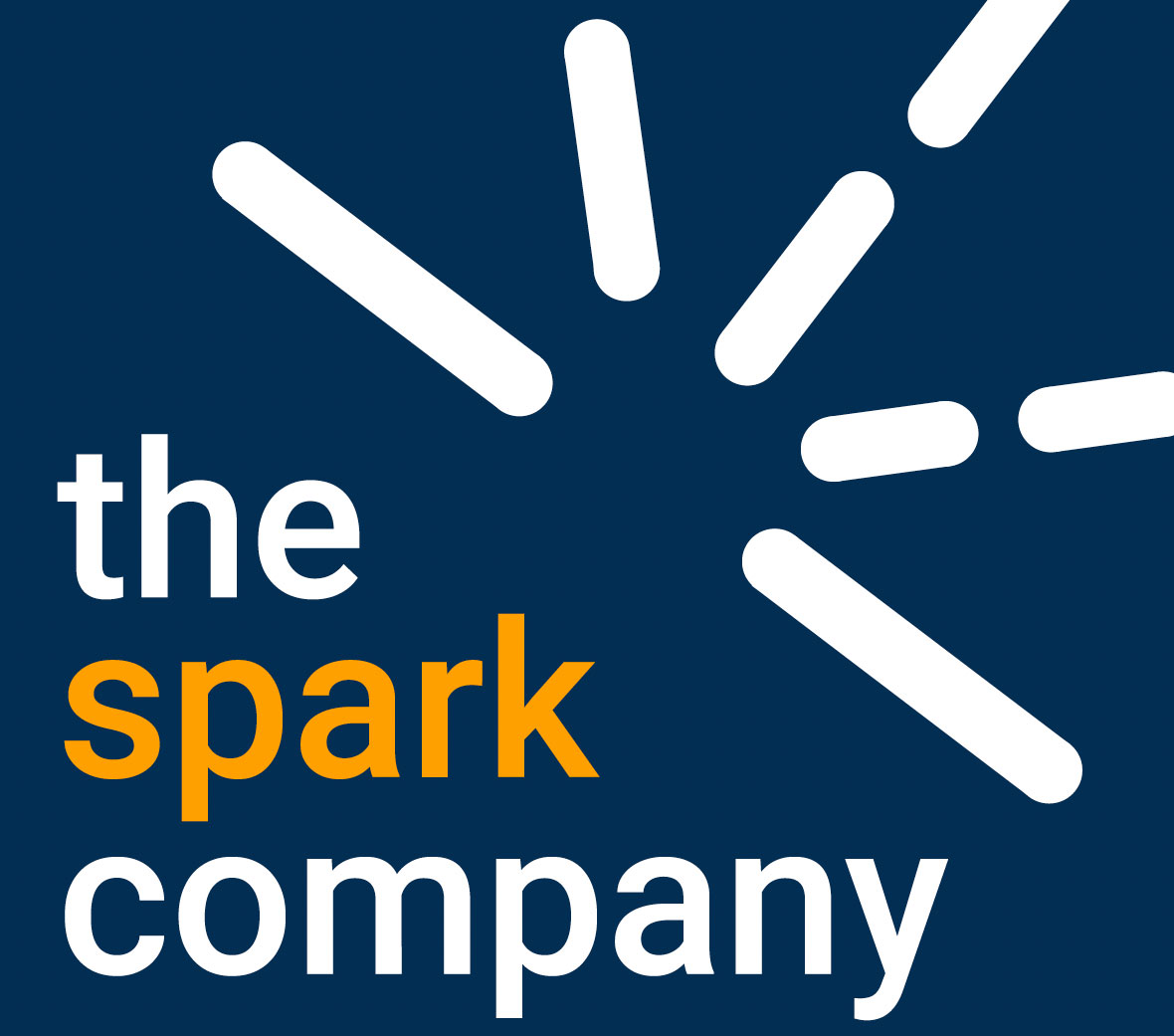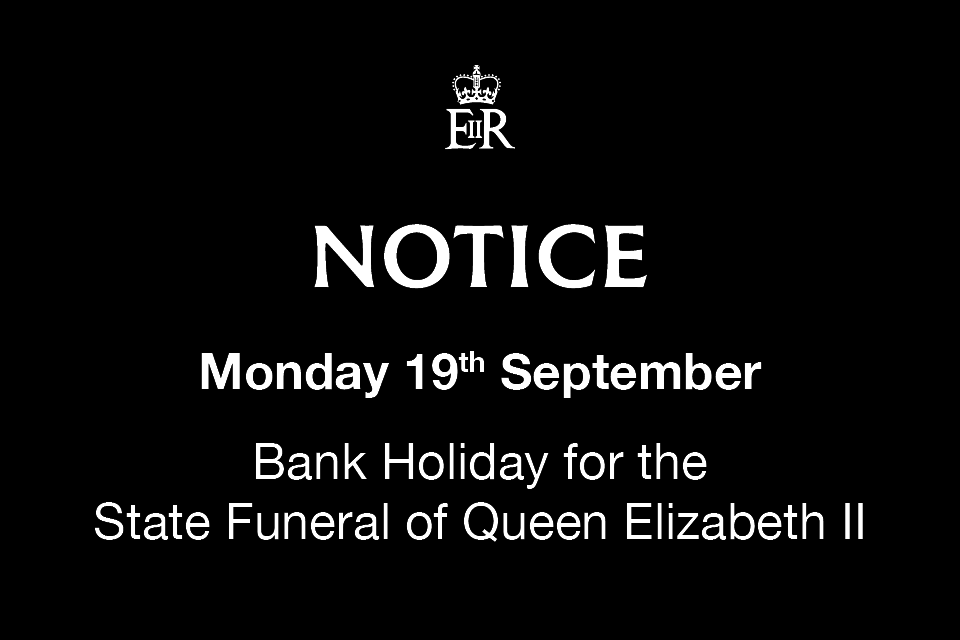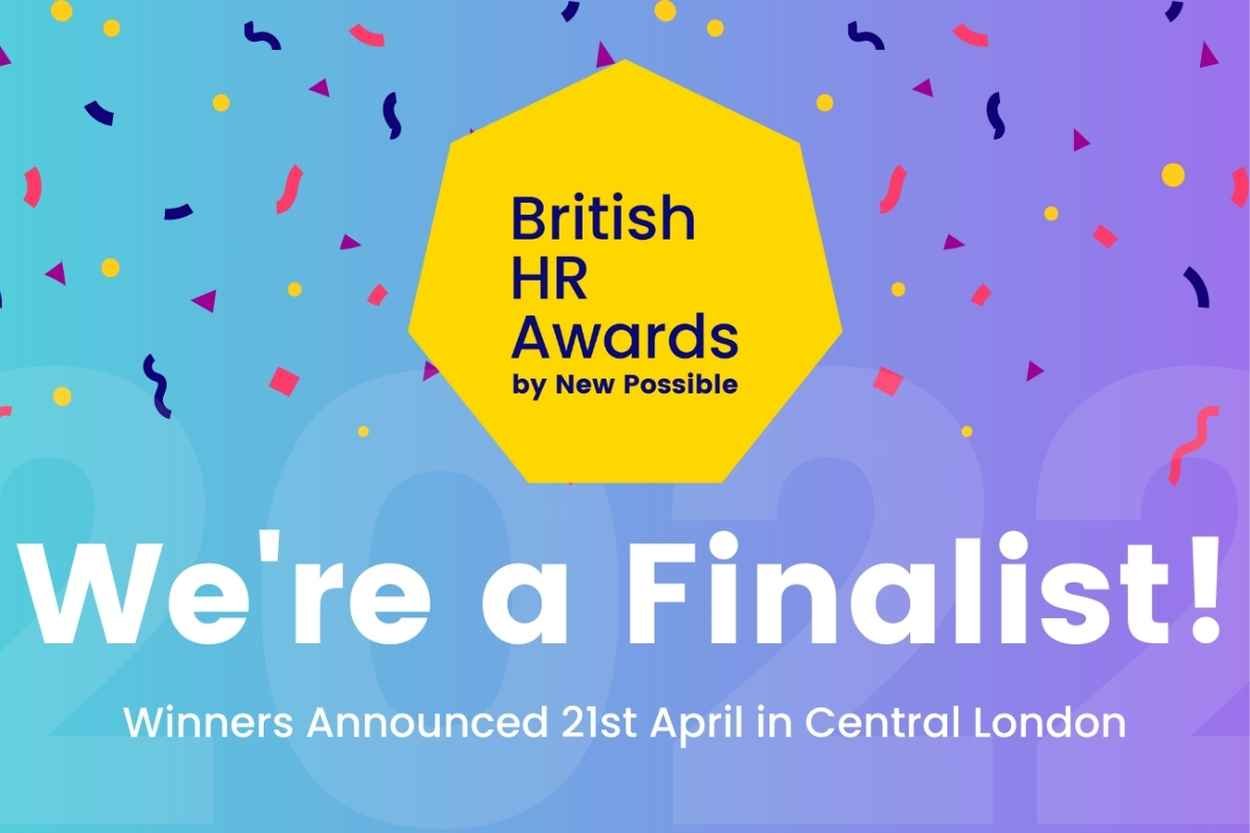Is there ever a ‘good way’ to tell people they no longer have a job? Well, Twitter and Stripe have recently had to grapple with this challenge, with other companies, such as Meta, following swiftly behind.
How leaders respond and communicate in difficult times is key to the health and wellbeing of both their people, and their business. Many companies have often already publicly declared how they want to talk to people, through proudly displayed value statements on their websites.
Blowing your own trumpet on what matters to your business is great, but it must be real. Have a little read of how important Twitter thinks healthy conversation is. In summary … ‘should be able to speak your mind’ … ‘find credible information easily’ …’want you to be part of the conversation’ … ‘you should feel safe.' Then consider the chaotic communication around the severance of potentially 7,500 Twitter staff over the past few weeks. This story has been delivered to the public domain through knee-jerk tweets from company leaders, complemented by tales of exceptionally poor treatment shared by disgruntled (and who can blame them) former employees.
Twitter slashed nearly half of its workforce without any warning or formal process
In stark contrast, financial infrastructure internet startup Stripe, issued a bold press statement, publicly explaining how and why they would be laying off 14% of their workforce. In a message that was slick beyond belief, the leadership team explained clearly what they were doing, and took full responsibility for mistakes that had been made. Their brand values? Well, they include: ‘move with urgency and focus’, ‘think rigorously’ and ‘optimism’. Their statement about staff lay-offs, is a perfect ode to their brand values. This is a crucial lesson for all leaders.
Create strong values, that you can really live by. Make them the foundation for your business and you will have a unshakeable confidence that will help to guide you through the tough times. This nugget, is the first of our essential lessons for leaders on laying people off with decency and integrity …
Stripe cut 14% of its staff and released one of the best statements I've ever seen
Always follow your internal procedures and comply with employment law
Above all, leaders must take note of the clear legislation and guidance from ACAS to guide employers who are considering making redundancies. If you’re not sure which process and procedure to follow, or which legislation applies to your changes, talk to your HR Business Partner or give us a call.
Ending people’s employment is one the hardest things you must do as a leader. We have lots of experience in supporting organisations to make difficult decisions with compassion and confidence. If you could benefit from the advice of an experienced specialist, then please, get in touch.
Twitter & Stripe: Do They Practise What They Preach?



Live your values – more so during challenging times

Lay-off and redundancy procedures should, as a minimum, be legally compliant

Word will get out – manage the message

Remember the people left behind – support them

Put a recovery plan in place

Final thought
I need HR support to restructure my team
Tag: Leadership
HR myths busted: “Cost of living support – all staff, must be treated the same”
Doing the same for everyone means you are treating people equally. But your people are not all in the same position. Treating people fairly means that you do the right thing for that person, so you are meeting their individual needs. Giving everyone the same may feel fair, but it isn’t.

The cost of living crisis will not impact all your people equally. Higher earners will be better insulated to survive. How do you, as a CEO, implement support that helps the people that need it, without ostracising the people that don’t?

What is the difference between treating people equally and treating people fairly?
Doing the same for everyone means you are treating people equally. But your people are not all in the same position. Treating people fairly means that you do the right thing for that person, so you are meeting their individual needs. Giving everyone the same may feel fair, but it isn’t.
Equal treatment (i.e. the same) doesn't always produce an equitable outcome
One off payments may benefit higher paid staff more than lower paid colleagues
- There’s been a lot of publicity about one-off ‘cost of living payments’. Barclays, Co-operative Bank, Sky, Nationwide, Virgin Money, NatWest and HSBC are amongst many big brands that have decided to pursue this path.
- We urge you to think carefully before paying staff bonuses or making ‘cost of living’ payments.
- When you calculate a % of salary, or a cash lump sum remember that some formulas benefit higher-paid staff more than lower-paid staff. This defeats the object of financial support. Same goes for staff who earn commission and are on a relatively low-base pay, will you look at total earnings?

One off payments may increase your gender pay gap
If you’ve got a gender pay gap (and you probably have) and/or an ethnicity pay gap (which you also probably have and may not even measure) take care not to increase inequality through your actions.
Don’t assume low use of an existing benefit means it’s not valuable

You may inadvertently create a wider gender and ethnicity pay gap
If you’ve got a gender pay gap (and you probably have) and/or an ethnicity pay gap (which you also probably have and may not even measure) take care not to increase inequality through your actions
Not every benefit needs to have majority use to be valuable. Removing a low-use benefit might have a significant impact on some team members.
For example, a health cash plan, which gives cash back for dental, optical, and other routine health appointments, might be disproportionately beneficial to working families or those with long term health needs.
Be sure to check the impact of your decisions with a formal Equality Impact Assessment and by listening to your team before you act.
Don’t know where to start when it comes to supporting your team through the Cost of Living Crisis?
We are passionate about finding ways to help bosses do the best they can to look after their people.
Some of what we’ve outlined here is simple, but implementing activity that’s targeted to help those that need it most often gets businesses in a pickle. Primarily because they get bogged down about treating all employees the same.
If you need help to work how to support those that need it in a way that’s fair and legal, then please drop us a line. We’d be happy to talk to you.
State Funeral Bank Holiday – what are my obligations as an employer and what does this mean for my team?
Monday 19th September 2022, the date of Her late Majesty Queen Elizabeth II’s State Funeral, will be a UK Bank Holiday. A statement released via the UK Government website says “Monday 19 September, the date of Her Majesty Queen Elizabeth II’s State Funeral, will be a national bank holiday”. Business owners, leaders and managers have only a few days to decide how to manage the additional bank holiday.
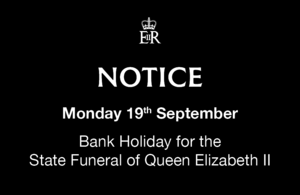
“This will allow individuals, businesses and other organisations to pay their respects to Her Majesty and commemorate Her reign, while marking the final day of the period of national mourning.”
“This bank holiday will operate in the same way as other bank holidays, and there is no statutory entitlement to time off. Employers may include bank holidays as part of a worker’s leave entitlement.”
This date marks the final day of the period of national mourning. UK Government advice is clear, to a point.
The way you manage the additional bank holiday is largely dependent on the wording of your contracts of employment, custom and practice in your business, and given the unique circumstances you’ll also need to be sensitive to the needs of your team.
The broad advice from the UK Government is that “this is a matter for discussion between individuals and their employer”. If nothing else, we’d advise you to take a sensible, pragmatic approach and ask your team what they want to do.
Here’s the answers to the FAQs we’ve been asked (so far)…
We’ve done our best to pull together a practical set of FAQs with sensible suggestions on how to manage the additional bank holiday. Please get in touch if you need specific advice for your business or organisation.
A note about our FAQs and examples: please do not interpret this article as formal guidance or legal advice. Our FAQs and examples are here to guide your decision-making process but we’d always suggest you consider in the broader context of your customer needs, contractual terms and your workplace culture.
Do I have to close my business on 19th September 2022?
No, if you would normally be open on Monday 19th September 2022 there is nothing in law to prevent you from opening as normal.
It’s worth bearing in mind that over the weekend we’ve all seen pictures and videos of the huge national outpouring of grief and celebration of Her late Majesty’s life.
It likely that you have customer, suppliers, key stakeholders and prospects who will want to celebrate the life of Queen Elizabeth II. By the same token there will be others who will not want to commemorate her reign and will want to escape the news coverage and media reporting.
This isn’t a royalist vs. republican ‘thing’; you need to do what’s right for your organisation.
You’ll also need to weigh-up the benefits and practicalities of staying open vs. closing, including whether you have enough team members available (which leads us nicely onto our next question…).
There is no legal requirement to close your business on 19th September 2022
Are schools, colleges and other government services going to be closed on 19th September 2022?
Yes, we understand that all public-sector schools will be closed on 19th September 2022. Colleges and Universities are also likely to be closed (TBC).
We also expect all UK Government Departments and Local Authority offices to be closed, although critical services such as the National Health Service and other 24/7 services will remain open. Please check with your local service providers for specific opening times.
Naturally, this means that families, parents and grandparents of school-age children will either need to find childcare within the next few days, or will need to talk to you about whether they can have the day off work.
We think it’s better to manage time-off as sensibly as possible, taking all the learnings from the agility and responsiveness shown by teams during the COVID-19 pandemic.
If you can manage time-off without resorting to formal policies and procedures, particularly for families and working parents and grandparents, so much the better.
Schools will be closed on 19th September 2022
Does the bank holiday mean that I have to give employees the day off work?
In a word, no. There is no statutory entitlement to time off for bank holidays.
You don’t ‘have to’ give colleagues the day off but you might want to consider requests for annual leave if you’re not closing on 19th September 2022.
If you are closing and would normally be open, most (if not all) employees should be paid as normal if they’re available for work.
There is no statutory entitlement to time-off on a bank holiday
Interestingly, the UK Government has said:
“The government cannot interfere in existing contractual arrangements between employers and workers.”
“However, we would expect that many workers will be able to take the day off on the bank holiday.”
“We also expect employers to respond sensitively to requests from workers who wish to take the day of the funeral off work.”
Example 1 – your contract of employment states ‘employees are entitled to 20 days annual leave (statutory minimum) plus public/bank holidays’.
Yes, your employees are entitled to an extra day’s holiday.
Why? Because 19th September 2022 is public/bank holiday and the example contract wording doesn’t state (or limit) the number of public/bank holidays.
Don’t forget: part time workers are entitled to a pro-rata amount based on their working hours/pattern.
Example 2 – your contract of employment states ‘employees are entitled to 28 days annual leave including public/bank holidays’.
A probable interpretation of the wording would suggest ‘yes’, they’re entitled to an additional holiday.
Why? The statutory minimum of annual leave is 20 days and there will be 9 public holidays in 2022 (29 days)
Huh? The wording of the contract says ‘including’ public/bank holidays without specifying the exact number, but since offering <20 days annual leave is not legal, an additional day’s entitlement is implied.
Don’t forget: part time workers are entitled to a pro-rata amount based on their working hours/pattern.
Example 3 – your contract of employment states employees are entitled to >28 days annual leave including public/bank holidays, for example ‘35 days annual leave including public/bank holidays’.
A strict interpretation of the wording would suggest ‘no’, they’re not entitled to any additional holiday.
Why? You already offer greater than the statutory minimum of annual leave and public holidays, and the wording says ‘including’ without specifying the exact number.
Given the unique circumstances you may decide to grant the additional day either on-the-day or as an addition to your employees’ total time-off allowance for the year.
Check your contractual entitlement wording before making any decisions
This list isn’t intended to cover every situation. Naturally there may be other examples of working patterns and contractual entitlements. Always check your contracts before making any decisions and if you’re not sure, talk to your HR Business Partner or give us a call.
What is the UK Government advising employers to do?
There are so many different and unique contractual arrangements between employers and employees, it’s impossible to come-up with a list of instructions that will cover all eventualities.
The UK Government has put out a press release which covers the basics. You can read the full press release on the UK Government website.
There is no ‘one size fits all’ set of instructions for employers
Four practical things to do this week
Make a decision, ideally by mid-week to give you plenty of time to communicate what’s going on. For your team, the earlier you can decide the better, especially if they’re going to need to make arrangements for childcare. This is important for everyone, including your customers. If you are closing, make sure you update your Google Maps listing and other directories where you publicise your opening hours, otherwise your team might come back to complaints from people trying to reach you.
Get HR and/or legal advice (if you need to). If your contractual entitlements or working arrangements are complex, don’t be afraid to get some help from your HR and legal advisors. It’s best to be safe.
Update your HR / Annual Leave system with the additional bank holiday. If you use a service provider they’ll probably have a help page on their knowledge base to help you get this done. Just bear in mind they can’t make the decision on how to handle the additional day, so if you decide to give everyone an additional day off, you’ll probably need to do a bulk upload/change of annual leave entitlement too.
Remind your employees about your Employee Assistance Programme. Over the weekend we’ve seen how many people have come out to share their grief and celebrate the life of Her late Majesty Queen Elizabeth II. Some people in your team may have been deeply affected by the death of The Queen, they may need to access the wellbeing services via your Employee Assistance Programme (EAP). Similarly there may be people in your team who do not support the monarchy or the Royal Family and have been triggered by the events of the past few days; they too may benefit from the services of your EAP.
Don’t know where to start?
There’s only a few days to make arrangements and communicate with your team and your customers.
If you’re struggling to wade through contractual entitlements and the practicalities of the additional bank holiday, feel free to give me a call for support and advice.
How to Lead Hybrid Teams
Shake it all about! We all know traditional working practices have changed. People have been flipping between being in and out of the office for over 2 years now. Something which has undoubtedly shaken many companies.
Lots of office workers have now been instructed to return for at least some of the week. But the situation that greets them varies hugely between organisations, internal teams and even pay grades.

How does it feel if your CEO has said you have to be in the office everyday, but you’ve not seen them up close and personal for weeks?
Or how about if some teams in the business are in, but others are entirely home-based?
The aftermath of the pandemic has left a huge swathe of organisations with fragile, fractured or ‘not quite figured out yet’ working environments. Some organisations moved quickly to new working policies whereas others have muddled along without formalising new ways of working.
C-suite executives expect 87% of work to be done via some form of hybrid working
According to research by McKinsey, most organisations don’t yet have a detailed vision in place for hybrid working, with as few as 3 out of 10 organisations having both prepared for and communicated their vision for the post-pandemic world. Despite this, executives expect most work to be done via some form of hybrid work in future. Perhaps many of us are still in ‘reaction mode’ and the case for hybrid working is still unclear?

Why could a hybrid working model be good for my business?
If you’re considering it, it’s probably because you’re already doing it in some way. Hybrid working became a necessity in the pandemic.
Some organisations only did it because they had to, and for some companies, being at work in person will always be the best model for them.
Hybrid working is no longer a ‘nice to have’, it’s a ‘must have’ for most workers
Benefits of Working at Home
-
Focused periods of concentration on tasks that are best done uninterpreted.
-
A place to do virtual calls.
-
Good for those who need adjustments to their working environment, such as people with a disability.
-
More useable time in the day for those who have a lengthy commute.
-
A better work/life balance.
Benefits of Being in The Workplace*
Informal learning of technical knowledge… being in earshot of colleagues.
Learning good leadership skills by listening to and ‘soaking up’ the actions of positive role models.
More chance to naturally include less confident colleagues, in meetings that are in-person.
More opportunities for new starters to absorb company culture.
*Not of the ‘benefits’ of working in the workplace are effective if leaders and relevant colleagues are not there… AT THE SAME TIME!
Absorbing and contributing to company culture is virtually impossible at home

How do I lead a fully hybrid team?
Hybrid working is not new. Tech companies like Google have been doing it across teams successfully for many years.
The reason they and others adopted it in the first place was because it was better for productivity.
For hybrid working to work, leaders need to be clear and visible and employees need to understand how their work fits into big picture company objectives.
Agree the ground rules for hybrid working, including what leaders need to do
Five practical steps to successful hybrid working
There are some specific steps that every leader can take to make hybrid working work for you, your team and most importantly, your customers. One word of warning before you start…don’t be the CEO that says everyone has to work in a certain way, except you. That’s a sure-fire way to make sure hybrid working doesn’t work.
Step 1 – Make an Agreement (Formal or Informal)
If people have become used to the flexibility of 100% home working they need time to put a new routine in place.
Remember, people will be factoring in the cost of commuting, cost of living and childcare responsibilities.
You may be perfectly entitled to have them back in the office but do it with compassion.
Top Tip: an informal or formal agreement can help get people back into the office, particularly if different parts of your business need different levels of on-site and remote working.
Step 2 – Lead by Example
You may have always worked from home as a leader, but for hybrid working to be successful, days in the office have to be really meaningful.
You need to model this way of working to make sure that engagement with company culture and productivity stays high.
Not sure your company culture is strong enough? Here are 10 proactive things you can do as a leader to improve your culture.
Step 3 – Make Office Dates Matter
Understand which tasks work better at home and which benefit from face-to-face communication and plan around this.
There is no point in scheduling lots of virtual calls on a day when everyone’s in the office. It’s pointless. (Ever travelled to work, done a day of Teams or Zoom calls from the office, then travelled home when you could have been anywhere? Ergh.)
Also try to schedule company-wide office dates so that people are able to ‘drop in’ on useful colleagues.
Step 4 – Plan Unstructured Collaboration Time
Scheduling unstructured collaboration time will invigorate your team, encourage creative thinking and help people feel positive about coming into work.
A Deloitte survey of over 3,500 workers showed that people are up to 20% more satisfied with their workplace culture when they have access to collaboration tools that enable them to work in teams, and 34% happier with their workplace when collaboration and innovation are encouraged.
We also know that productivity, revenue, and profitability are all positively impacted by engagement at work – collaboration with colleagues is just one way to keep your team engaged.
Step 5 – More Office Time For New Starters & Their Managers
Your organisation is a complex web of different traits, habits, actions … ways of communicating.
All of these are compromised if newbies aren’t properly integrated into the organisation.
Plan extra time in the office for people joining your organisation and their managers.
Top Tip: set an expectation that managers are on-site with new colleagues for their induction, you can share the responsibility amongst a pool of managers so new starters kick-start their internal networking.
Ringfence your time at the office for collaboration and engaging with your team

Why can’t I get my team to come back to the office?
Lots of people like working from home but it’s not without challenges, subsequently a sensible hybrid model is a pretty logical way of working for most people.
So, if you’re really struggling to get people to come back, it’s likely that your office was not a welcoming, inclusive and flexible environment in the first place!
If you’re a leader that would like a conversation about how to create and manage a hybrid working model, get in touch. We’ll show you how to enhance every professional relationship across your entire business.
A welcoming, inclusive and flexible workspace is essential for hybrid working
Don’t know where to start?
I know that making changes to your workplace and culture can be daunting – most people don’t know where to start.
I love working with Exec Teams to improve performance and unleash the potential of their organisations. Who knows what you might achieve?
Give me a call if you want to explore the options for hybrid working in your team.
Image credits
Images sourced from Canva Pro and are photographers are not individually credited. If you see one of your photos above,please let us know so we can credit you here. Photo of Andrew Knight by Nick Morrish from Nick Morrish Photography
References
Digital collaboration. Delivering innovation, productivity and happiness. Deloitte (2013)
What executives are saying about the future of hybrid work. McKinsey & Company (2021)
We’re a Finalist in the Wales HR Awards 2022
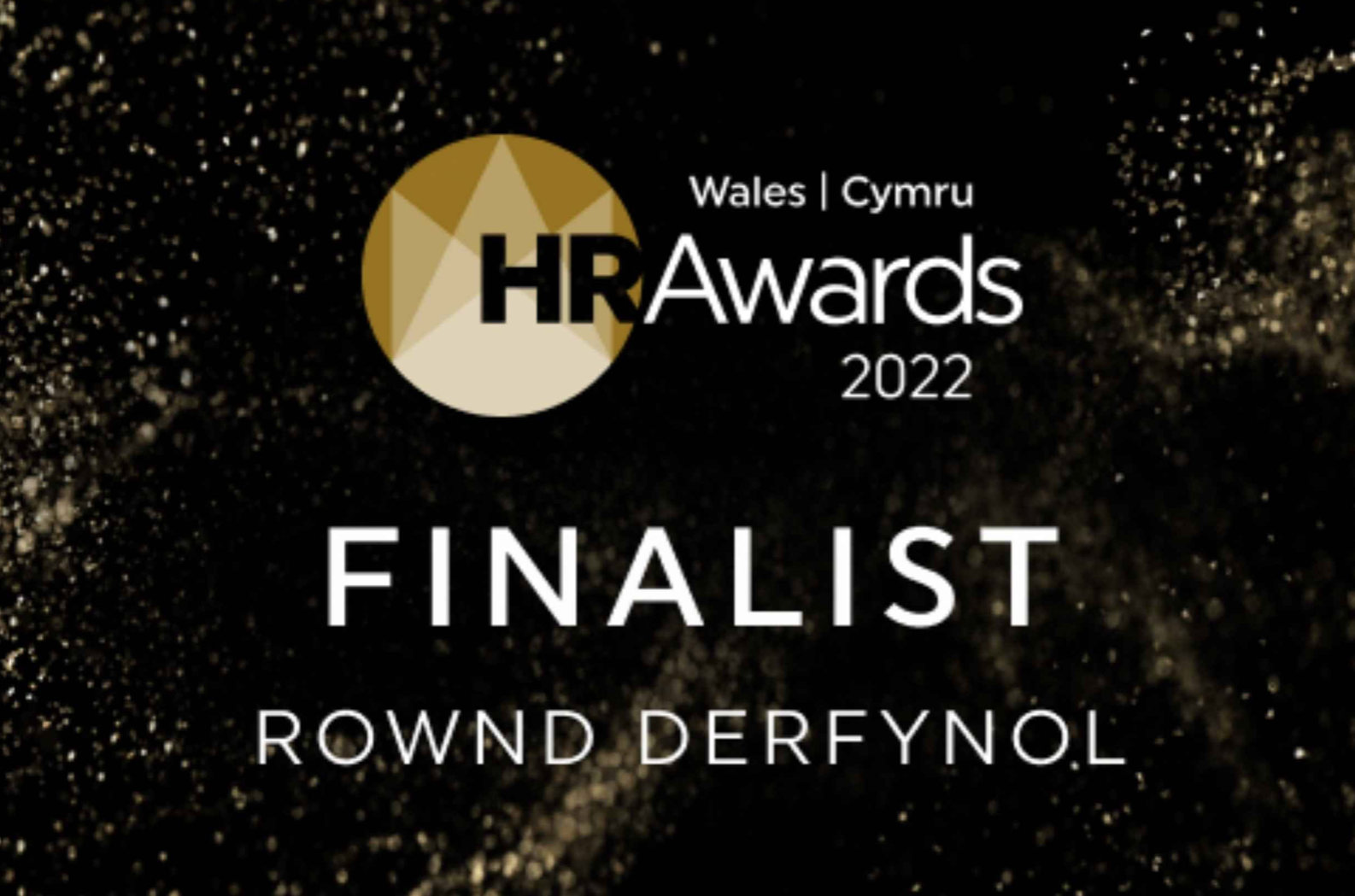
With a range of categories including ‘HR Director of the Year’, ‘Outstanding HR Professional’ and ‘HR Team of the Year’, the Welsh HR Awards 2022 recognises and celebrates excellence across the HR profession in Wales. It’s a real honour to be nominated and make it through to the finals.
The awards will celebrate the unsung HR heroes working behind the scenes to support businesses and organisations of all sizes over the past twelve months.
We can’t wait to meet the other outstanding nominees and to hear about the incredible achievements of these individuals and teams.
We’re proud to be shortlisted for the Consultancy of The Year 2022 Award

Organisations looking for transactional, one-off advice to deal with employment issues are well-served by the market. However, leaders that want to make commercial, customer-focused HR or people changes often struggle to find quality strategic consultants that don’t force them to be tied into subscriptions, memberships, or retainers. That’s where we come in.
We aim to work with clients on long term strategic projects and deliverables. People love working with us because they’re continually pleased with the high-quality work and advice they are getting, rather than because they are tied in.
“I’m thrilled that The Spark Company has been shortlisted and feel privileged to be considered alongside so many other awesome finalists.
This wouldn’t be possible without the generous feedback of our amazing clients and the incredible video testimonials they’ve shared.”
Andrew Knight, Principal Consultant and Founder
About the judges
The Welsh HR Awards 2022 judges include:
-
Rebecca Cooper, Head of People & Development at ACT Training
-
Alison Wright, Director of Calland Wright Consulting
-
Fiona Sinclair, HR Consultant at Darwin Gray LLP
-
Emily Meredith, Group Head of HR at Acorn Recruitment
-
Vicki Richards, Employee Experience Director at UNRVLD
We’ll find out if we’ve won at an awards ceremony in Cardiff on the 8th July 2022.
Darwin Gray’s Head of Employment Law and HR, Fflur Jones said: “We were delighted with the quality and number of entries for this year’s HR awards. The fact so many companies and organisations decided to enter the awards demonstrate in what high esteem these businesses hold their HR managers and teams. They will have played an instrumental role in steering their organisations during the COVID 19 pandemic. We look forward to celebrating all their achievements on the night.”
About the Wales HR Awards
The Welsh HR Awards are made possible by Acorn and Darwin Gray LLP. The Wales HR Awards recognises and celebrates excellence across the HR profession in Wales.
About The Spark Company
The Spark Company specialises in Human Resource Development and Organisational Transformation. Founded by Andrew Knight with the guiding philosophy that putting people first always leads to better business results.
The Spark Company gives clients access to high quality consultancy services to transform productivity and performance across the whole organisation.
We can help with human side of organisational change, mergers and acquisitions, restructures and those thorny HR issues that crop-up from time to time.
Choosing the right HR Consultancy
If your organisation needs to transform your productivity and performance, I’d love to hear from you. I love working with companies who want to make meaningful and sustainable change.
Get in touch for a friendly chat about how I can help.
HR myths busted: “Formal annual appraisals are more important than informal check-ins”
There was a time when it would be considered a clear mark of a rubbish employer if there wasn’t a structured yearly appraisal in place. But the modern workplace recognises that a date in the diary once a year, coupled with a fat form to fill in, is nowhere near as effective as regular informal feedback.

Too many businesses conduct annual reviews in a way that is overly formal, creating unnecessary paperwork and ticking a box, without really getting to the heart of the employee’s performance.
Lots of big companies, such as Adobe, have scrapped the yearly appraisal after realising the huge investment in the process often fails to hit the mark.
At Adobe, after a staff consultation, the old performance management system was replaced with check-in discussions at least once a quarter with less paperwork and proper space to review contributions, reward achievements and gather feedback.
It’s a great example, and is starting to be adopted by many forward-thinking companies.
Formal box-ticking appraisals are a barrier to good performance and development

How often should performance be reviewed?
There is no magic formula, but regular and meaningful is a good rule of thumb.
- Don’t save things up for a yearly formal review
- Involve employees in decisions to reprioritise workloads in real time, and explain why it’s necessary.
- Meet monthly for a structured review and if that’s not possible, no less than every six months.
Daily feedback is 6x more likely to be meaningful than annual feedback
How should I be managing and developing performance in my organisation?
- The key to managing performance is open and transparent conversations, where the employee feels in control of their own destiny.
- Both employer and employee know what’s expected of them, what they’re great at, and where they need support. It’s not rocket science, this approach builds engagement, which is better for business.
- Research shows engaged employees generate 43% more revenue than disengaged counterparts. High engagement can also lead to a tripling in profit growth, an 87% reduction in staff turnover and a 20% improvement in performance.
It's not rocket science: higher engagement = improved productivity and performance

What’s the starting point for a new system?
Make sure both the employee and manager are clear about what their performance is being measured against.
You will need:
- A job description that’s real, not aspirational! It should outline responsibilities, and accurately reflect the job that’s being done.
- A clear understanding of what’s expected at work.
- A rock-solid connection between individual goals and the goals of the business.
- With these basics in hand, managers can agree clear objectives and work out with employees how to regularly measure performance.
Have regular conversations to create a high performance culture

What does a good performance review system look like?
A system that’s working well will increase staff moral, engagement and productivity. It will nip problems in the bud by dealing with anything that comes up quickly, and will prevent the company from spending huge chunks of time on the paperwork that traditional annual appraisals generate.
Top tip: use a blend of formal reviews and informal development conversations
How can I design the right approach for me?
- What works for you will depend on your business, there is no one-size fits all, although as a general guide everyone could benefit from creating a process that:
- Reviews energy, engagement, wellbeing, resilience, skills, personal development and priorities.
- Creates a balanced scorecard which measures WHAT’s been achieved and progress made.
- Gathers feedback from colleagues, customers and managers on HOW the employees’ approach their work.
- Outlines goals and commitments …what’s happening next and how will the business support this.
- Moving from a yearly appraisal system to more regular check-ins may be a huge change for your organisation and managers may need lots of additional training and support.
- Managers may need training and support to give regular and meaningful feedback
Organisational wide forms, systems, templates and guidance are a good idea, including making best use of HR self-service and HR systems. Above all, managers need to be self-aware and understand how to tailor their approach to the needs and wants of each team member.
Managers may need training and support to give regular and meaningful feedback
Organisational wide forms, systems, templates and guidance are a good idea, including making best use of HR self-service and HR systems. Above all, managers need to be self-aware and understand how to tailor their approach to the needs and wants of each team member.
Don’t know where to start when it comes to supporting your team through the Cost of Living Crisis?
We are passionate about finding ways to help bosses do the best they can to look after their people.
Some of what we’ve outlined here is simple, but implementing activity that’s targeted to help those that need it most often gets businesses in a pickle. Primarily because they get bogged down about treating all employees the same.
If you need help to work how to support those that need it in a way that’s fair and legal, then please drop us a line. We’d be happy to talk to you.
Ascenti | Bespoke Leadership Development Programme
A great partner for any business
“Andrew at The Spark Company is a great partner for a business to work with. He combines a practical, no nonsense approach with good technical knowledge and quickly builds a rapport with existing teams to hit the ground running.”
Jacinta Magee
Chief Financial Officer
⭐️ ⭐️ ⭐️ ⭐️ ⭐️ Google Review

Client
Ascenti
- Ascenti is the UK’s leading provider of physiotherapy and mental health services.
- The Ascenti team provides excellent patient care at over 400 clinics across UK, supported by office-based and regional teams.
- Patients are treated by a national network of 500 directly employed Ascenti clinicians delivering upwards of 600,000 treatment sessions every year.
Challenge
Design and deliver a structured leadership programme for line and middle managers
- Like many rapidly growing organisations, Ascenti identified their leaders needed structured development programme to enable their growth ambitions.
- Ascenti’s Exec Team asked us to come up with a bespoke programme.
- The initial cohort would include line managers and middle managers, with various levels of experience.

A safe space for leaders to flourish
“From the very first meeting I had with Andrew he felt like part of our team and not an external consultant. He went on to lead on our management training using the Insights Discovery Personal Profile and is an amazing facilitator, allowing for everyone to participate and get the most out of each session.
He creates a fun and safe environment to allow effective collaboration and thought sharing. I would always recommend Andrew’s services.”
Angela Shott
Head of Operations
⭐️ ⭐️ ⭐️ ⭐️ ⭐️ Google Review

Solution
LEAP: The Leadership Development Programme for Ascenti Managers
- We designed a structure programme which included an Insights Discovery Personal Profile, formal training, action learning and personal reflection.
- We delivered training to 3 Cohorts from September to December 2020, and broke-off into 7 smaller Action Learning Sets from January to April 2021.
- The programme was delivered online to comply with COVID-19 restrictions, and we sent personal learning packs which accompanied the programme to each delegate’s home.
Impact
Greater confidence and effectiveness from leaders at all levels
- Delegates gave the Management Development Programme an impressive Net Promoter Score (NPS) score of 50.
- Newly appointed managers gave the programme an outstanding NPS score of 65!
- Delegates reported a 19% increase in confidence when talking about their own preferences, behaviours and leadership style.

Managers told us they were more confident, had greater self-awareness and a better understanding of others.

New and experienced managers
89% would recommend The Spark Company to others

New and experienced managers
90% would recommend Insights Discovery to others

New Managers
Newly appointed managers gave an average 91% satisfaction rating
Looking for a bespoke Leadership or Management Development Programme?
Do your leaders need to improve their self-confidence and effectiveness? Fed-up of off-the-shelf training that doesn’t have any impact in the real world?
If you are looking for a programme that enables leaders to understand their personal strengths, preferences, blind spots and possible weaknesses, we can help. We support leaders to translate learning into positive changes to productivity and performance in the real-world
Give us a call for a friendly chat about how we can help your leaders flourish.
Does your HR team make things easier or are they getting in the way?
We’ve talked a lot recently about how to spot when things aren’t going well. We’ve covered cultural blindspots, festering grievances and ineffective organisational structures.
In lots of cases these problems emerge because those in charge of managing HR are distracted by other stuff!
From holiday pay and recruitment challenges through to furlough – a busy HR team often gets bogged down with no time to see the big picture. It doesn’t have to be this way!
Changes to company infrastructure and HR systems could revolutionise the capacity of your HR team and make it easier for your organisation to get things done. After all, most (if not all) HR people want to do the best for you, your teams and your customers.
Our job as HR practitioners is to enable you to achieve your goals and objectives
Great. But what are HR doing, whilst I’m doing all the people stuff?

This might come as a bit of a shock, but virtually all day-to-day people management decisions should sit with line managers, not HR.
This means everything from 1:1s, performance coaching, recognising achievements, managing attendance, and so on…
Organisations that manage people through a centralised HR department are outdated and often not resourced effectively. Gone are the days of HR making decisions for managers or telling managers what to do.
In modern organisations, it’s HR that enables and managers that manage

It makes more sense for teams to be given the skills and flexibility to manage their people properly.
If you can achieve this, then your HR team will have the time and space to make your organisation function better. There are four things they can do to achieve this (Ulrich model):
Be a Strategic Partner
-
This is about the alignment of HR activities and initiatives with your business aims and strategy.
-
Strategic partners see beyond the internal function of HR to consider the customer and how best to organise the business to serve their needs.
-
It’s usually a job for HR Directors and HR Business Partners.
Be a Change Agent
-
An HR team can be instrumental in supporting change that helps the business to achieve its aims.
-
It’s not about restructuring for the sake of it.
-
The role of HR is to be an expert and trusted adviser, and driver of change activities.
-
They should also be able to understand the future skills and talent needed to make any organisational changes a success.
Be an Employee Champion
-
Being an employee champion is about doing the best for colleagues, leaders, and customers, it shouldn’t be confused with formal advocacy or trade union activity.
-
Good leadership, clear brand values and a solid organisational moral compass will nurture authentic employee champions.
-
These people are crucial and act as the conscience of the business, taking care of people at all levels equally, and prioritising ethical and fair business practices.
Be an Administrative Expert
-
We don’t mean the world’s fastest touch-typist!
-
In the past HR was about writing letters and documents for managers as they ‘couldn’t be trusted’ to do it themselves.
-
These days it’s about creating efficient administrative systems, providing user-friendly templates for managers to personalise and most of all, maintaining excellent HR technology that enables people.
-
In short, this is where HR can and should, get out of your way.
HR falls down when we focus on one role and not excellence in all areas

How are HR using technology to manage and enable people?
Knowing when to automate processes and when the human touch is still needed, is a key skill for HR leaders.
We all expect on-demand and instant service, from banking apps to self-service tills in stores, HR is no different.
Our colleagues expect to be able to easily make holiday bookings, record appraisal ratings and access their data at the touch of a button.
An HR team that’s nailed being an ‘administrative expert’ will be creating, maintaining, and evolving systems, tools, and technology to serve you better. Remember, a system with even a minimal level of automation can save hours of wasted time and admin that does not add value, freeing-up time for HR teams to add value in other ways.
HR technology can be used enhance engagement and save valuable time

What is the gold standard for a modern HR team?
Obviously, all organisations are different, but the key is to enable your HR Team to be an integral part of the business, not an afterthought.
HR Teams come in all different shapes and sizes, but the best and most effective HR functions a focused on their customers.
Award-winning HR Teams enable managers and teams to achieve their goals
We’ll give a gold star to any HR team that…
-
Puts the customer first – HR is a core support function, so an overhead that you need to get the best value for. HRBPs and HR Directors should be structuring the business to better achieve your customer goals. When you understand what the customer needs you can shape systems and processes accordingly.
-
Is a genuine catalyst for change – Top HR teams will ask tough questions about how you’re going to achieve your objectives. This can result in minor adaptations and actions, or major restructures and changes to how the business works. Either way, a top-notch HR team will be help you to manage change effectively and sustainably.
-
Empowers others to make change happen! – Your HR team should be the experts at enabling and empowering managers to deliver the business plan for your customers.
-
Makes the best use of talent and skill – Specialists specialise and generalists generalise. Wait…what? We’re talking about making the best use of talent, skill, and experience both within your team and elsewhere. Rely on your HRBP to get the best from your HR service and help you achieve your goals, and leave specialists to deliver project work and key goals across the organisation.
-
Is totally prepared to say ‘no’ – The best HR teams help leaders to avoid unfocused vanity projects and ad hoc ‘people initiatives’ (so unhelpful) that aren’t linked to a proper strategy or business goals. Empower your HR Team to say ‘no’ to things that will not help to achieve your vision.
How can I achieve HR gold?
Be bold and give more power to the people! If your HR team is micromanaging every person in your business from some ivory tower (or just a bog-standard red brick HQ) have a good think about what they could achieve if they weren’t rubber stamping holiday request forms or typing up appraisals.
There is so much that can be achieved by overhauling outdated systems. Even by introducing one single approval workflow in a business, we saved 1,000 hours of management time over a year.
Give me a call and I’ll explain how even minor changes like this can make a dramatic difference.
I need the help of a HR specialist to transform my HR function
You might not know how or where to start changing things to create extra capacity in your HR Team. You might need an experienced and knowledgeable HR specialist to help you get started and create an action plan.
I love working with HR Teams to release capacity and release their potential. Who knows what they might achieve?
Get in touch for a friendly chat about how I can help.
Image credits
Images sourced from Canva Pro and are photographers are not individually credited. If you see one of your photos above, please let us know so we can credit you here. Photo of Andrew Knight by Nick Morrish from Nick Morrish Photography
We’re a Finalist in the British HR Awards 2022
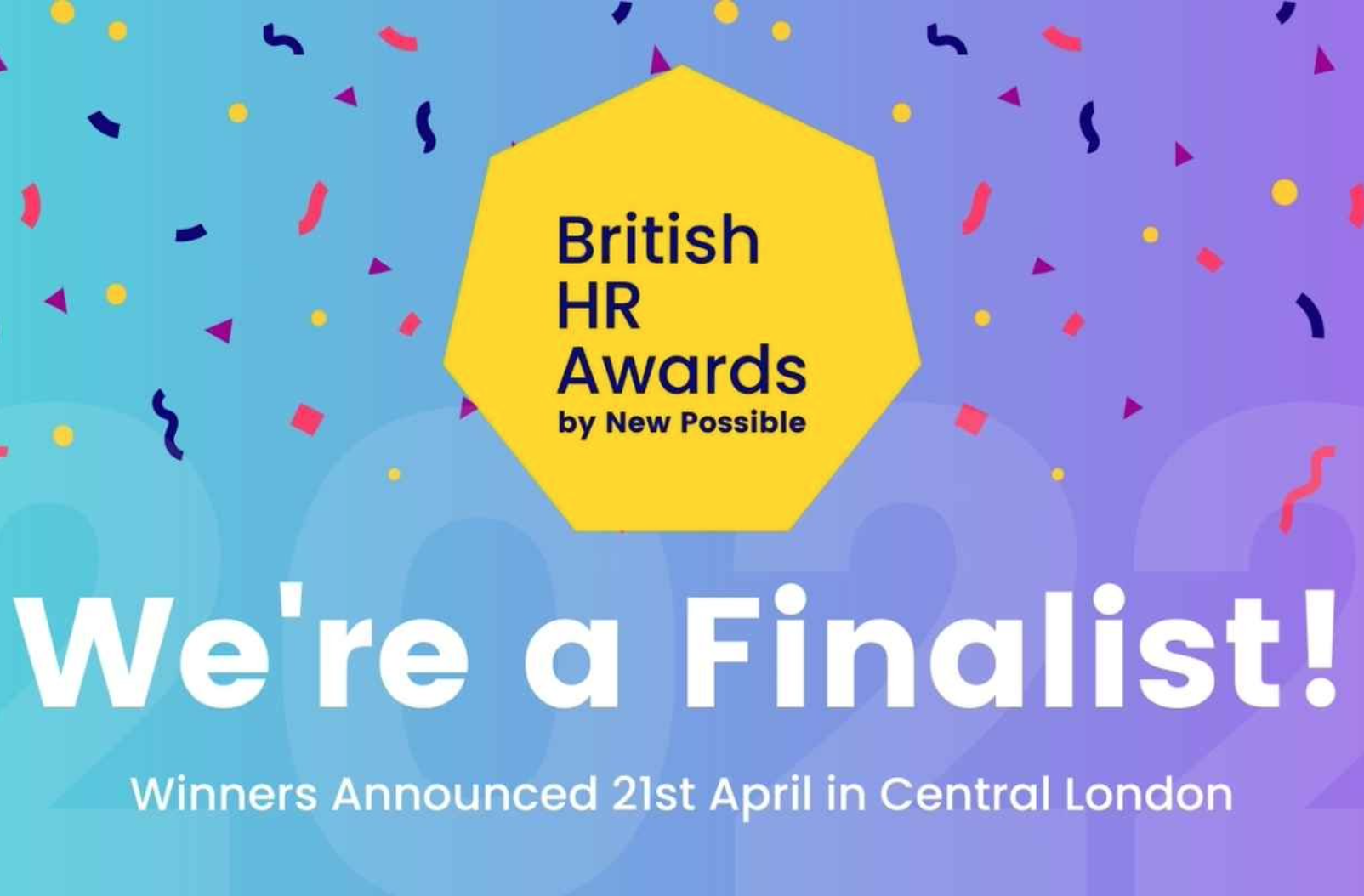
With a range of categories including ‘Best Overall People Experience,’ ‘Wellness Initiative of the Year’ and ‘Rising Star of the Year’ the British HR Awards 2022 sets out to discover and celebrate the organisations and individuals that are truly passionate about delivering a world-class people experience.
This year, just over 100 entries were received from organisations across the UK, and so competition to be named a Finalist proved to be very tough.
Firms taking part range from innovative start-ups to tech unicorns, global giants, not for profits and everything in between.
We’ve been shortlisted for not one, but two awards…
Start-Up of The Year 2022
Consultancy of The Year 2022

Organisations looking for transactional, one-off advice to deal with employment issues are well-served by the market. However, leaders that want to make commercial, customer-focused HR or people changes often struggle to find quality strategic consultants that don’t force them to be tied into subscriptions, memberships, or retainers. That’s where we come in.
We aim to work with clients on long term strategic projects and deliverables. People love working with us because they’re continually pleased with the high-quality work and advice they are getting, rather than because they are tied in.
“I’m delighted that The Spark Company has been shortlisted in two categories and feel privileged to be considered alongside so many other awesome finalists.
This wouldn’t be possible without the support of our amazing clients and the incredible testimonials they’ve shared.”
Andrew Knight, Principal Consultant and Founder
About the judges
The British HR Awards 2022 judges include:
-
Mel Willsmore, People Director at Strike
-
Perry Timms, Chief Energy Officer at People and Transformational HR
-
Kelly Stokes, HR Director at Aldi UK
-
Hannah Reid, People Director at Apple
-
Melanie Punch, Head of UK Careers at Investec
-
Neil Piper, Chief People Officer at KFC
-
Daniel Kasmir, Chief People and Procurement Officer at TalkTalk
-
Nate Harwood, Founder at New Possible
We’ll find out if we’ve won at an awards ceremony in Central London on the 21st April 2022.
Nate Harwood, Founder of New Possible and British HR Awards judge said: “The quality and diversity of entries has made judging a real challenge, but also a great privilege. We’re immensely proud to recognise the organisations and individuals that are working hard to create exceptional people experiences. These leaders are fundamentally reimagining the future of work and helping to showcase British HR leadership on a truly global scale. Congratulations to all the Finalists.”
About the British HR Awards
The British HR Awards is powered by New Possible, a next-generation employee insight platform. New Possible helps HR leaders build healthier organisations by providing meaningful insight that can drive real change.
About The Spark Company
The Spark Company is an expert HR and change management consultancy. Founded by Andrew Knight with the guiding philosophy that putting people first always leads to better business results.
The Spark Company gives clients access to high quality consultancy services to achieve specific change management and strategic HR projects.
We can help with human side of organisational change, mergers and acquisitions, restructures and those thorny HR issues that crop-up from time to time.
Choosing the right HR Consultant
If your organisation needs support from an experienced HR and change consultant, I’d love to hear from you. I love getting stuck into sustainable and meaningful change projects.
Get in touch for a friendly chat about how I can help.
The Company Culture Blindspot
Before the article, a word or two about Ukraine 🇺🇦
When I drafted the outline for this article a few weeks ago, I couldn’t have imagined that Russia was about to invade Ukraine. At that time the rolling-news agenda was dominated by #partygate, the Sue Gray report, the Met Police and the ‘toxic culture’ at 10 Downing Street. What a difference two weeks makes.
Like many of you, I’ve watched the news in horror, bearing witness to this unfolding catastrophe through the reports of journalists and the messages from the brave people of Ukraine. And let’s be honest; from my position of relative comfort and privilege, ‘thoughts and prayers’ are utterly insufficient.
If you want to do something to help, you can donate to the Disasters Emergency Committee Ukraine Humanitarian Appeal. By donating you’ll help DEC charities provide food, water, shelter and healthcare to refugees and displaced families. Also, the DEC Afghanistan Crisis Appeal remains open to respond to what the Head of the World Food Programme previously described as “the worst humanitarian crisis on earth”.
I’ve decided to publish this article as planned, because an organisation’s culture and leadership are key to the resilience, productivity and success of its team. This is especially important at times of uncertainty and crisis, whether the cause is close to home and (potentially) controllable, or further afield and out of our control. So, what does your company culture say about you, how you manage uncertainty, and how you support your team?
Can you see what your workplace culture says about your business?
Having a strong workplace culture can be a lifeline in times of pressure or stress. Internal strains aside, whatever’s happening in the world will have an impact on your workforce. Whether the pressures and stresses your team are feeling are as a result of Brexit, COVID-19 or a raging war, a working environment that feels psychologically safe is really important.

Prior to the Russian invasion of Ukraine, the ‘toxic culture’ of both Downing Street and the Met Police dominated the news for what felt like forever. Understanding that culture change is key in transforming an underperforming business is not an alien concept to many leaders.
Most leaders understand the necessity of good workplace culture. The trouble is that even though we know what it means, it can still be hard to recognise what’s happening in our own organisations.
Most leaders don’t know how to objectively measure and assess company culture
In this article, we discuss a few positive and negative indicators that you might recognise from your own business. Lots of positives means Sue Gray is never going to knock on your door…but more than a handful of negatives is a definite red flag.
Think of your organisation as a complex web of different traits, habits, actions … ways of communicating. Johnson and Scholes mapped this out in their Cultural Web tool into six high-level categories, which we’ve unpicked here.
Control Systems
Organisation Structures
Power Structures
Rituals & Routines
Symbols
Stories

What are the positive signs that we have a healthy work culture?
Let me be clear here, the perfect culture does not exist (sorry not sorry to the perfectionists out there). Whenever I work with clients on cultural change, I’m always on the lookout for positive signs of a healthy culture.
Some indicators will be subtle, and some are glaringly obvious. You might have a handle on the formal culture across the business but find gauging the informal culture is much harder.
Culture can be subjective but you can objectively assess the formal and informal elements in your workplace
Formal indications of a healthy work culture
• Control Systems – colleagues accept responsibility to support and develop others. Balanced decision-making is valued. Information is shared transparently, with no mind games!
• Organisational Structures – teams work collaboratively. Purpose and strategy are clear to all. Learning from failure is encouraged and there is space to make mistakes without unfair reprisals.
• Power Structures – clearly delegated authority. Leaders are open to (and seek) challenge. Teams tend to be self-managing. There is a high-trust environment.
Informal indications of a healthy work culture
• Rituals & Routines – culture of learning and nurturing talent. Customers at the heart of all decisions, inclusivity beyond legal requirements.
• Symbols – success and failure leading to innovation is celebrated. An informal hierarchy. Strong, organised internal communication tools. Leaders shape culture through their actions.
• Stories – no rumours or gossip (ok, minimal rumours or gossip), all information is shared, listening is valued, clear guidance on how conflict is managed.
If you only come across positive indications…you’re not looking hard enough!

What are the signs that our culture isn’t doing us any favours?
Reminder: the goal is to check the health of your company culture and it would be weird if you didn’t come across some negative indications, so please try to be open to them.
If you notice one-offs from the list below that might not mean you’ve got a problem; after all, none of us are perfect, right?
But lots of negatives are a red flag and indicate you’d benefit from digging a little deeper.
So take a deep breath… and dive in…
None of us are perfect, but if you notice lots of red flags, it’s time to dig a little deeper
Formal indications of an unhealthy work culture
• Control Systems – areas of the business where ‘management’ is feared. Sales or performance incentives drive inappropriate behaviour. Processes are side-stepped with workarounds.
• Organisational Structures – business units operate in silos or with minimal collaboration. Diaries are overloaded with meetings. Promotions are decided based on who you know.
• Power Structures – leaders make unilateral decisions without adequate consultation. Information is managed on a ‘need to know’ basis. Challenge is absent, discouraged or simply ignored.
Informal indications of an unhealthy work culture
• Rituals & Routines – communication is a one-way street. Leaders broadcast messages and employees are told to leave their personal life at the door.
• Symbols – there are unwritten rules about teams, people, or places to avoid in the business. Some teams are higher in the pecking order than others and burnout is a badge of honour.
• Stories – whispers of toxic behaviour tolerated from high earners or top performers, managers ‘throwing their weight around,’ gossip about leadership conflicts.
If you only come across negative indications…take a step back and check your own blind spots (and biases)!
If you recognise some of these points, consider whether your team feel psychologically safe enough to raise them with you themselves? Having a working environment that allows people to feel comfortable speaking truth to power is a vital part of a healthy company culture.
It is challenging, but possible, to assess your culture from the inside. There are lots of tools available to assess culture and there are simple things you could try and implement straight away to make your place a better place.
Here’s a link to my list of 10 proactive and pragmatic things leaders can do immediately to influence company culture, split into organisation-wide, team and individual actions.
Invest in your culture
If you’ve read this far you know it matters! Assess how you can do better – happy, healthy, profitable businesses put aside time and effort into nurturing a positive culture. Assessing your culture needs a coordinated approach and, particularly in a large business with lots of divisions, it may feel like a daunting task.

If it’s too much, an external consultant might be a worthwhile investment. It’s more cost effective to pay an HR expert to do it right first time, than getting an internal team to struggle with it over a longer period.
A fresh pair of eyes will often see more when it comes to diagnosing cultural problems and will be able to help you create a plan of work to implement and manage change.
“Andrew at The Spark Company is a great partner for a business to work with. He combines a practical, no-nonsense approach with good technical knowledge and quickly builds a rapport with existing teams to hit the ground running”.
⭐️⭐️⭐️⭐️⭐️ Google Review
Choosing the right HR Consultant (and get a return on your investment)
Your organisation’s culture and values are essential to your performance and success, but how do you measure them?
If you aren’t sure where to start when it comes to a culture review or diagnostic; or if you’re ready to make a positive change to your organisation’s culture, values and performance, I’d love to hear from you.
Get in touch for a friendly chat about how I can help.
